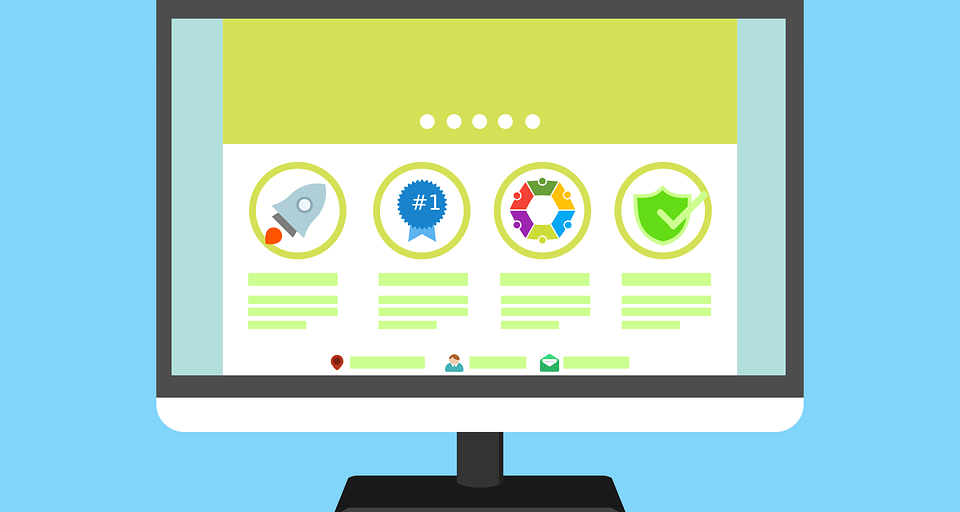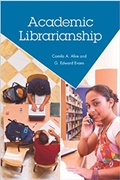What Good Are All These Links? Rethinking the Academic Library Website
Who, besides the librarians, knows where the link to the library website is on the institutional homepage? Is it prominently visible to visitors? Can faculty and students find it with ease? Or is it buried deeply among some tangle of menu options that makes it nearly impossible to locate? Perhaps there is no library link on the homepage. For many librarians that is a source of real anxiety. Internally it can be interpreted as a sign that the library is not important here. It raises concerns that, to external parties such as students and their parents, the institution communicates that it places no value on the library. But perhaps having a library link on the institution’s homepage is passé, an antiquated concept that is more about emotional bonds to the library than the reality of how people are really finding information.
Finding the Library Homepage
Most individuals, having neither the web address of the library or a direct link to its homepage, will simply navigate directly to their favorite search engine, do a search on “[fill in the name] university library,” click on the first link on the result page and hooray! There you are, at the library. That’s how people find things on the Internet. What they no longer do is go to the university homepage and then forage for the library link. This Library Issues examines how changing patterns of search behavior among students and faculty requires us to rethink two things. First, is a link to the library on the institutional home page all that important anymore? Second, how can the design of a library website maximize the use of library content by students and faculty? Do library homepages filled to the brim with links still make sense or are there better ways to connect our user community members with the information they seek? In the new library website paradigm, creating community awareness while distributing access to content across the educational spectrum requires a rethinking of our linking practices.

Symbol or Necessity?
The institutional homepage is considered prime web real estate. Visitors with no specific destination make it their first stop. It’s no surprise that library administrators would want an easily findable link to the library there. But from the perspective of the academic administration, the institutional website has a different function beyond providing links to the library and other academic and administrative units. Over the past decade the institutional home-page has been transformed into one of the most important marketing resources available to a college or university. Prospective students and their parents typically make the website one of their first stops for gathering information about and comparing their “wish list” choices. From a marketing perspective then, presenting information to capture a prospective student’s attention is the greatest priority. That means vibrant photos of campus activity, student blogs and videos, and fast access to admissions information. While there’s certainly no harm in providing a link to the library homepage, from a marketing perspective it’s just less necessary. At best, it provides a link for current students and faculty who may find themselves on the homepage and needing to get to the library site. Most library administrators would certainly make a case for a highly visible library link as a symbol of the value the institution places on the library. But should the lack of a link to the library really call into question whether the institution values the library? The library remains a critical stop on the campus tour for visiting families. And the majority of alumni, when asked to name a campus location they consider “sacred space”, will often identify the library. So even if a college or university drops the library link from its homepage, the institution still has many opportunities to demonstrate the value it places upon the library. Librarians should discuss whether it is necessary to place so much emphasis on the symbolism of the library link.
From “What We Have” to “Who We Are”
The traditional function of the academic website was to provide links to the content. That meant links and lots of them. But that approach shifted when colleges and universities acknowledged the value of the homepage for institutional marketing. When the marketing department sought to apply its concepts to other areas of the academic website, many departments, including the library, resisted the idea. The marketing approach was perceived as little more than a shallow attempt by the administration to turn the library homepage from a hallowed resource to a shill for the institution. In retrospect it appears the marketers had the right idea. Today’s undergraduates are less likely to comb through dozens of links on a website than they are to just search for what they want. Faculty and graduate students more typically bookmark their frequently used library resources or access them via their professional society sites. So why construct a homepage built around links? “The academic library expends considerable institutional resources on materials, and if they go unused because no one knows they exist, that is an incredible waste of those resources.“ What the marketers have done is design homepages that emphasize the personality and culture of the institution, its students and its faculty. The goal is to give web visitors an experience that entices them to want to know more, to visit the institution and to add it to their wish list. Put simply, it’s about getting to know who the institution is, not just the resources they own. A similar philosophy about homepage design might just do an academic library good.

Redesign with Marketing in Mind
If academic administrators and library directors were to sit down together for a critical review of the library homepage from a marketing perspective, what would they find? There are questions that could be asked that may determine if the homepage is relevant or could use improvement. The following are a few that come to mind:
- Count the links. How many are there? If it exceeds 25 or 30 it may be time to ask if so many links are needed. Too many links equals too much information. Quickly isolating that which is of real value from what is less important and rarely needed becomes difficult. Which links have the higher priority? What is mere filler? Can we retain only the most important links and relegate the rest to secondary pages or eliminate them through consolidation?
- Can community members find out what is happening at the library? Is the latest news highly visible, and does it change regularly? Does the homepage promote the library as the cultural, social and intellectual center of campus? Put the news front and center. Let the community know how much more there is to an academic library than electronic resources. Think creatively about using visual design elements to capture attention.
- What can you learn about the people who work at the library beyond their names and titles? Does the site promote who they are and what they do? Create a visible and vibrant spot on the library homepage to promote its most valuable asset – the people who work there. Use the library website to lay the foundation for building relationships between the user community and library staff. It’s the relationship we have with our users, not the content, that delivers real meaning.
- Is information about the library’s treasures such as its rare books, institutional archives and the facility’s sacred spaces being promoted or are these critical resources hidden from the community? The library homepage should provide images of these important resources so that students and faculty are readily aware they exist. Many libraries want their unique primary research sources available for use, but how can that happen if no one on campus knows of their availability?
A streamlined homepage design does more than give visitors an improved “less is more” user experience. It enhances the all important discoverability factor. The academic community can become more knowledgeable about the library’s resources and access them more efficiently. The academic library expends considerable institutional resources on materials, and if they go unused because no one knows they exist, that is an incredible waste of those resources. When it comes to library homepage design, thinking more like a marketing team than librarians will lead to a redesign that promotes a “who we are and what we can do for you” approach as opposed to one that simply tries to cram as many links to content as possible on to the page.
Rethinking Your Linking
When your library homepage does evolve into a better marketing vehicle, what will become of all those links to content that used to populate the homepage? Where will they go and how will students and faculty get to the databases? The answer is that they will migrate to spaces where those who need the links can find them more easily. This matters because studies of faculty information-seeking behavior informs us that they no longer use the library’s traditional paths to scholarly content. The library’s role as a gateway for locating information is on the decline. Both faculty and students increasingly consult non-library resources for their research or they simply bypass the library’s homepage to connect to Project JSTOR, or electronic journals and other institutional resources to which they can create their own bookmarks. The irony of the academic library’s success at creating such efficient web connections to resources is that its user community literally no longer needs it as a gateway to information. But the reality is that students and faculty remain largely unaware of the library’s extensive electronic holdings. When the user community establishes its own pathways to the library’s resources it not only diminishes the potency of a link-laden homepage, but it further reduces the likelihood of making new discoveries on the library’s website.
Go where the users are. Savvy academic librarians are taking a completely different approach to facilitating resource discovery enabling scholars and their students to find library content previously unknown to them. Put simply, the links go where the users are. Nearly ubiquitous course management systems (e.g., Blackboard, Moodle) provide academic librarians with a rich platform for distributing the content that was previously found only through the library’s website. Not only can the links be placed in the learning spaces where faculty and students gather, but it can be done with strategic precision: librarians can pre-select the right set of resources based on curricular needs and place them where the users can’t possibly miss them. “As academic libraries make it easier for faculty to integrate the library content into their courses, the need for an overly ‘linkified’ library homepage is negated.“
Working with faculty. How does this work in practice? It can happen several different ways, but it helps when faculty are open to collaborating with librarians. Working together faculty and librarians can successfully integrate library resources in a website or the courseware system. It can be as easy as a faculty member and librarian working together to identify appropriate articles, books and databases for an assignment. The links to these materials are then integrated into the course, most likely on to an existing page for resources or assignments.
Customizing guides to courses. Librarians can also prepare highly customized subject guides that are tailored to specific courses and assignments; these guides or components of them are integrated into the courses. Some libraries are further simplifying things for faculty by giving them a ready-to-launch content package that can be uploaded to a course site where it will deploy once it is imported into a course. As academic libraries make it easier for faculty to integrate the library content into their courses, the need for an overly “linkified” library homepage is negated.
Start With a Conversation
While it is easy to recommend a radical rethinking of the library website, it’s less easily accomplished. A great deal of work goes into designing, developing and maintaining the site. In addition, each librarian may have a highly personalized sense of what users want and what sort of website design works best to meet users’ needs. It would be completely reasonable to encounter some tough questions from librarians and even outright resistance. Some will insist that they know what the users want better than the users do. They will further insist that the users have but one wish for a library website – to get to their favorite database or e-resource. The academic library website can be more. It can help build relationships with the user community, extend the services of the library into a virtual world and provide a path for the uninitiated to discover that the library is about much more than electronic content. The idea of allowing marketing to influence the design of the library website will strike some purists as a sell out to running a library like a business, but the reality is that sometimes the business world, marketers in particular, offer ideas that academic librarians should consider emulating. Academic administrators, working with their library director, can at least initiate a process for examining whether the library’s website is designed with today’s faculty and students in mind. One way to do this is to engage faculty and students in conversation to obtain a more realistic sense of their search behavior. Librarians need to hear from their own user community how the library website has grown less useful and perhaps even too convoluted with links to be of much use. Usability studies can be helpful to make incremental improvements to the website, but rethinking the strategic value and direction of the site requires that librarians hear from the users themselves – and be shown as well – what the users expect and want. If the users demonstrate they are less dependent on a conventional homepage, then change is needed. None of this is to suggest that academic libraries should abandon links to the staff directory, contact information, hours or other vital basics such as the database or journal finding tools. But those links no longer need to be the sum total of homepage content. Prominent, but highly selective quick links can often suffice.
Simplify Access. Promote Awareness. Create Success.
The library website may not be foremost on the mind of the academic administrator, but it can be worth his or her time to examine the website from the perspective of improved marketing and efficient institutional resource utilization. How efficiently are those resources are being used? How aware is the community of the library’s many resources and the subject experts who facilitate their use? The ease or difficulty with which members of the academic community are able to find and use costly bibliographic databases, e-journals and multimedia collections is directly impacted by the strategies academic librarians employ to connect the users to the this content. How well or poorly we fare at leveraging the library website to connect scholars to the literature they seek is far more critical today because those scholars have more diverse gateway options. Studies from the Ithaka Group and Simon Inger Consulting make clear that faculty increasingly choose new pathways to access the scholarly content. The number of scholars using Google Scholar to search and find articles from Project JSTOR, a vast repository of scholarly content, increased enormously between 2006 and 2007. Are faculty still coming to the library website? According to the signposts and data, for them the library website is no longer the primary gateway, and these studies present data collected two or more years ago. In 2010 the options scholars have beyond library websites are sure to increase. Academic administrators trust their librarians to make wise allocations of institutional funds to acquire the relevant and critical resources that best support the curriculum and promote student and faculty success. But the administrator’s interest in the library not should begin and end with the quality of the resources. It can extend beyond that into making sure those resources are well promoted, well placed and well leveraged so that they are more than just links on a library website.
Recommended Book

Academic Librarianship is a comprehensive book by authors with extensive experience in academic libraries. In it they look beyond management in libraries, since many texts and courses cover this aspect, and focus instead on the academic library environment as a whole... With plenty of information packed into the pages, this book is a must-read for anyone working in an academic library.
Latest Posts
- Google's Digitization Project — What Difference Will it Make?
- Assessing the Library’s Contribution to Student Learning
- Shaping a National Collective Collection: will your campus participate?
- Looking for Director Goodboss: How to Recruit a Head Librarian
- Social Networking: Strategic Use and Effective Policies in Higher Education
- The Library as a Place: Tradition and Evolution
- The USA Patriot Act: How Will Your Library Respond?
- What Good Are All These Links? Rethinking the Academic Library Website
We are part of PLA
Copyright © Library Issues. All Rights Reserved

